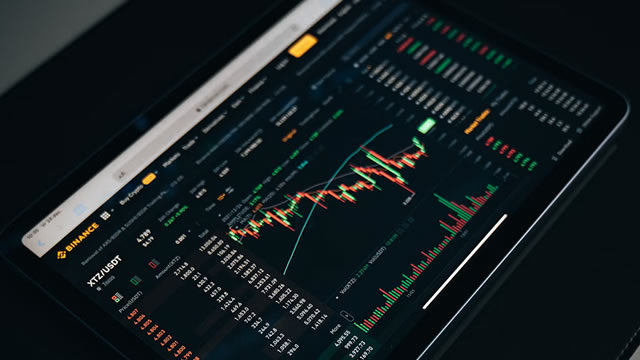The Impact of Tariffs on the Economy: A Discussion with Powell
Last week, in an interview with CNBC, Federal Reserve Chairman Jerome Powell shared his thoughts on the current economic landscape and the potential effects of tariffs. Powell was firm in his belief that the Fed was well-positioned to adapt to future conditions, but he also acknowledged that tariff policies were making the future very uncertain.
Powell’s Perspective on the Fed
When asked about the Fed’s ability to handle economic fluctuations, Powell expressed confidence in the central bank’s ability to respond to changing conditions. He stated, “We have a strong toolkit. We have a lot of tools that we can use to promote maximum employment and price stability.”
The Uncertainty of Tariffs
However, Powell also acknowledged that tariffs were adding a layer of uncertainty to the economic picture. He suggested that the impact of tariffs on inflation could be “transitory,” meaning that it may not last long. But he also cautioned that the longer-term effects were harder to predict.
Impact on Consumers: Higher Prices
One way that tariffs can impact consumers is through higher prices. According to a report by the National Retail Federation (NRF), tariffs on Chinese imports could lead to an increase in the cost of consumer goods by as much as 15%. This could result in higher prices for items such as electronics, clothing, and footwear.
- Electronics: Tariffs on Chinese-made electronics could lead to an increase in the price of items such as smartphones, laptops, and televisions.
- Clothing and Footwear: Tariffs on Chinese textiles and apparel could lead to an increase in the price of clothing and footwear.
- Home Goods: Tariffs on Chinese-made home goods could lead to an increase in the price of items such as furniture, bedding, and kitchenware.
Impact on Businesses: Increased Costs and Disrupted Supply Chains
Tariffs can also impact businesses through increased costs and disrupted supply chains. According to a survey by the National Association of Manufacturers (NAM), 71% of manufacturers reported that tariffs had negatively affected their business operations.
- Increased Costs: Tariffs can lead to increased costs for businesses due to higher prices for raw materials and components.
- Disrupted Supply Chains: Tariffs can disrupt supply chains, making it more difficult for businesses to obtain the raw materials and components they need to operate.
Impact on the World: Trade Tensions and Global Growth
The impact of tariffs is not limited to the United States. Trade tensions between the US and China have led to retaliatory tariffs, which can negatively impact global growth. According to a report by the International Monetary Fund (IMF), global growth is expected to slow down to 3.3% in 2019, down from 3.6% in 2018.
Conclusion
The impact of tariffs on the economy is a complex issue, with both short-term and long-term implications. While Federal Reserve Chairman Jerome Powell expressed confidence in the Fed’s ability to adapt to changing conditions, he also acknowledged that tariffs were adding a layer of uncertainty to the economic picture. For consumers, tariffs could lead to higher prices for goods. For businesses, tariffs could lead to increased costs and disrupted supply chains. And for the world, trade tensions could negatively impact global growth. As the situation continues to evolve, it is important for individuals and businesses to stay informed and adapt as needed.
Stay tuned for more insights and analysis on the economic landscape and the impact of tariffs.





